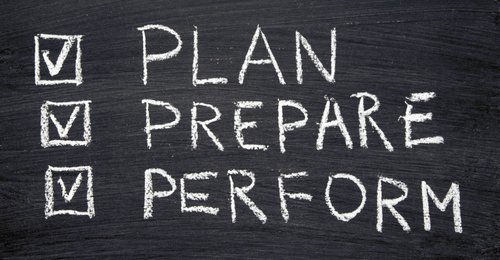With some form of stability beginning to emerge in some sectors, the focus has started to shift back to some more ‘normal’ customer engagements, but the spectre of social distancing remains and is likely to remain for some time to come. It seems pretty certain, that for most of us ‘virtual’ meetings will remain the norm and become a permanent feature into the future. This begs a question: “How do we interact with our customers virtually in a way that gets the most out of the experience for all?”
5% Club down to 1% Virtual Club?

What’s your immediate reaction to the word “sales”? For most people, it’s negative because it’s often done so poorly. In previous articles, we’ve written about why this is and the concept of the 5% club; only around 5% of customer engagements reach the heights of excellence that clients demand. Now throw the virtual world into that equation. What’s your experience with virtual meetings? For many, the score hits a low mark on virtual as well – no engagement, poor use of technology, little preparation. The list goes on. Why would it be different? Many salespeople don’t get trained at all to do their core job; trained to do it virtually? Even less likely.
Combine poor customer meetings with poor virtual capability and we’ve got a brand new elite – the 1% club. Excellence in customer engagement, done virtually. Now there’s a thing.
The good news here is that the very same elements that make physical customer meetings excellent are also a fundamental success criteria in the virtual world. The bad news is that this is simply the way that we now need to do it, compounded by the fact that technology demands better from you. In a series of articles & videos, we’ll explain what you need to do to get into the “1% virtual sales club.”
No time to prepare – what’s the new excuse?

Physical or virtual, the key to a successful customer meeting is preparation. It’s blindly obvious but is so obvious it blinds so many and they don’t do it. Think about your old physical customer meetings – how long did they take to get there? Planes, trains, and automobiles; using one or more of these modes of transport would put your travel time to a customer somewhere between 30 minutes to a few hours. In the virtual world, you get that time back.
Nature hates a vacuum and seeks to fill it. Business reacts in much the same way – activity expands to fill the time available. As a salesperson, you need to say “no“ to the new urgent and focus on what was always a more important priority – block out the preparation time in the diary & turn OFF the distractions. Better still, prepare with a colleague and hold each other accountable for it. Bin the new excuses.
What’s your preparation framework?
Just as for a physical customer meeting, you need a framework to prepare. If you’ve attended our Precision Selling programme, you have one. If you haven’t attended, you will find that it re-wires the way you sell more than you can imagine.
One of the big things that’s different in the virtual context is time. Over 90 minutes on a call is mentally & physically draining at the best of times – virtually, more so.
If you have big topics to discuss, “Slice the Banana” (Video) (article) – be realistic about what you can achieve, slice it into shorter sessions and increase the frequency. If you run it well and add value, your customer will notice, which increases the likelihood of agreement.
If you’ve got shorter meetings, you’ll also have some new things to think about and prepare for:
Check the tech

In the physical world the 5% club salesperson recognises the importance of managing the environment to maximise success. It’s the same in the virtual world. What platform does your customer use? There may be security issues to be aware of. Replicate the physical world; you’d get there early, 15 minutes before the meeting start time. Don’t wait to download the software when the meeting starts. Shut down anything on your PC (or in your home) that’s using bandwidth.
Practice using it BEFORE the meeting and be comfortable with it. If you’re using a visual presentation (& you should), ensure it works with the chosen platform. They are not all the same and not everything works in the same way.
Show as a pro

Look behind you – what image does it portray? Customers are more relaxed than ever before but you need to show up professionally; a ‘noisy’ cluttered background is a big distraction that you need to minimize. There’s enough distraction in the virtual world anyway, don’t let your home environment add to it. Clear & plain is best, tidy at a minimum & don’t use a ‘virtual’ background – you’re in danger of looking like a very dodgy 1980s pop video. Not a good look even in the 1980s, and in any case, the digitization of the background means that as you move, various parts of you disappear in and out of the image. It’s weird AND another distraction.
Do we need to mention clothes? Relaxed, yes. Professional, yes. Pyjama’s or vests – no. Bare-topped? Please, I don’t care if it’s sunny outside, we don’t need that look.
Engage, engage, engage
How well do you know how to get the most out of the tools on the virtual platform you will be using? Different platforms offer different means of engagement and the more you interact, in general, the more you engage. When you have multiple participants in ‘your’ meeting, consider how you are going to involve them, bringing them in at particular moments or for particular reasons. Any ‘5% club” salesperson knows the importance of preparing questions – in ‘virtual’ mode, this is even more important. Prepare who you will address your questions to and how you will use other platform tools to engage with your customers. For example, the use of “chat” is a great way of gathering opinions quickly with multiple stakeholders. Find out what technology they use and encourage them to use a laptop or tablet – not all the tools work on a phone & a presentation isn’t great on a small screen.

Not only do you need to prepare how you’ll engage but who’s going to do it. If there’s a few of you on the call, plan who’s doing what & when. Avoid those embarrassing ‘tumble-weed’ moments when you thought your colleague was going to take over; not good physically. Worse virtually.
Our experts are on hand to listen.
If you're unsure where to start with commercial training - we'll guide you, whatever your challenge.
Topics from this blog: Selling Virtual Meetings virtual selling

